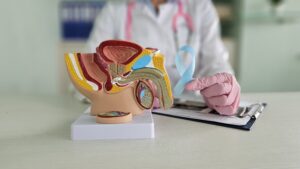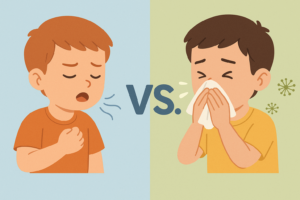Most people suffer quietly with anal region discomfort, itching, pain, or bleeding but are too shy to discuss it. The healing process begins with knowing what you’re suffering from—either piles, fissures, or a fistula.
These conditions are often mistaken for one another because they have similar symptoms, yet they are extremely different in cause, nature, and treatment. In this blog, we will make it clear what piles, fistula, and fissure are.
What Are Piles?
Piles, or hemorrhoids, refer to inflamed blood vessels in the anus or rectal area. They may be internal (within the rectum) or external (around the anus), and they tend to look like varicose veins.
Symptoms of Piles:
- Bleeding after or during defecation
- Itching or discomfort around the anus
- Swelling or soft mass around the anus
- A sensation of not being fully evacuated
- Mild pain upon sitting
Piles are most often due to chronic constipation, straining at bowel motions, pregnancy, or lack of exercise. They are not always painful, particularly in the initial phase, but may get aggravated if neglected.
What Is a Fissure?
An anal fissure is a small tear in the lining of the anal canal, usually caused by passing large or hard stools. It’s like a snip and causes sharp, stinging pain.
Symptoms of Fissure:
- Sudden, severe pain during and after passing stools
- Bright red bleeding on toilet paper or in the stool
- Burning sensation around the anus
- A visible tear in the anal canal
- A small skin tag or bump (in chronic cases)
Fissures are extremely painful, especially during bowel movements. They may cause anxiety and fear of using the toilet. Muscle spasms around the anus can further worsen the condition.
What Is a Fistula?
An anal fistula is a tunnel-like tract that connects the inner anal canal to the skin near the anus. It typically develops from an untreated anal abscess or infection.
Symptoms of Fistula:
- Repeated pus or discharge near the anus
- Swelling, redness
- Pain while sitting, walking, or passing stool
- Recurrent abscesses
- Fever during active infection
Unlike fissures or piles, a fistula is usually the result of an infection and needs proper medical care.
If you’re asking yourself: “How do I know if I have a fissure or fistula?”
- Stinging pain and bright bleeding after stools → Most likely a fissure
- Recurring pus discharge and fever → Most likely a fistula
When in doubt or facing a mix of symptoms, it’s best to consult a doctor. Early diagnosis leads to easier recovery.
Which Is More Painful: Piles or Fissures?
Many patients ask: Which is more painful, piles or fissures?
The answer is: Fissures are usually more painful.
The tearing, stinging pain during and after defecation can be intense and unbearable.
Piles, on the other hand, may cause itching, bleeding, or swelling, but the pain is generally milder unless they become thrombosed.
Pain in fistulas depends on the stage of infection—it could range from discomfort to sharp pain.
Can Piles Turn Into Fistulas?
Another related concern is: Can piles turn into fistulas?
The short answer is: No.
Piles and fistulas are distinct in their origin:
- Piles are vascular swellings.
- Fistulas are infected tracts that follow abscess formation.
However, if piles are repeatedly irritated or left untreated, the resulting poor hygiene and constant straining may increase the risk of infection, which in turn could lead to abscess or fistula formation.
So while piles don’t directly turn into fistulas, they can indirectly contribute to conditions that encourage one.
Why Early Diagnosis and Right Treatment Matter ?
All three conditions—piles, fissure, and fistula—can become chronic and complicated if left unaddressed. Many people silently suffer for years, relying on home remedies or creams that only give temporary relief.
Neglect can lead to:
- Persistent pain and discomfort
- Formation of abscesses
- Surgical interventions
- Poor emotional health and confidence
Natural and Holistic Care for Rectal Conditions
Homeopathy offers a gentle and effective treatment for piles, fissure, and fistula.
Why Consider Homeopathy?
- Zero side effects
- Treats the root cause, not just symptoms
- Improves bowel health and digestion
- Reduces recurrence risk
- Boosts overall healing and immunity
Many patients turn to homeopathy after repeated surgeries or unsuccessful ointments—only to finally find lasting relief.
A Word from Dr. Rashmi Chandwani: Healing the Source, Not Just the Surface
At our homeopathic clinic, we see countless patients silently enduring the pain, shame, and discomfort caused by these conditions.
Step one is reassurance. Step two is real, deep healing.
With customised remedies, lifestyle support, and a caring hand, we’ve helped hundreds of people avoid surgery and heal through homeopathy.
Final Words: Know the Difference, Choose the Right Path
Now that you understand the difference between piles, fistula, and fissure, you can take proactive steps in identifying symptoms and choosing the right course of treatment.
These are common, but not normal—and they shouldn’t be ignored.
If you’ve been wondering:
- How do I tell if I have a fistula or fissure?
- Can piles develop into fistulas?
- Which hurts more, piles or fissures?
—then we hope this blog offered clarity and comfort.
And if you’re seeking long-term relief, remember:
With the right guidance and a holistic approach like homeopathy, healing is not only possible—it’s closer than you think.




